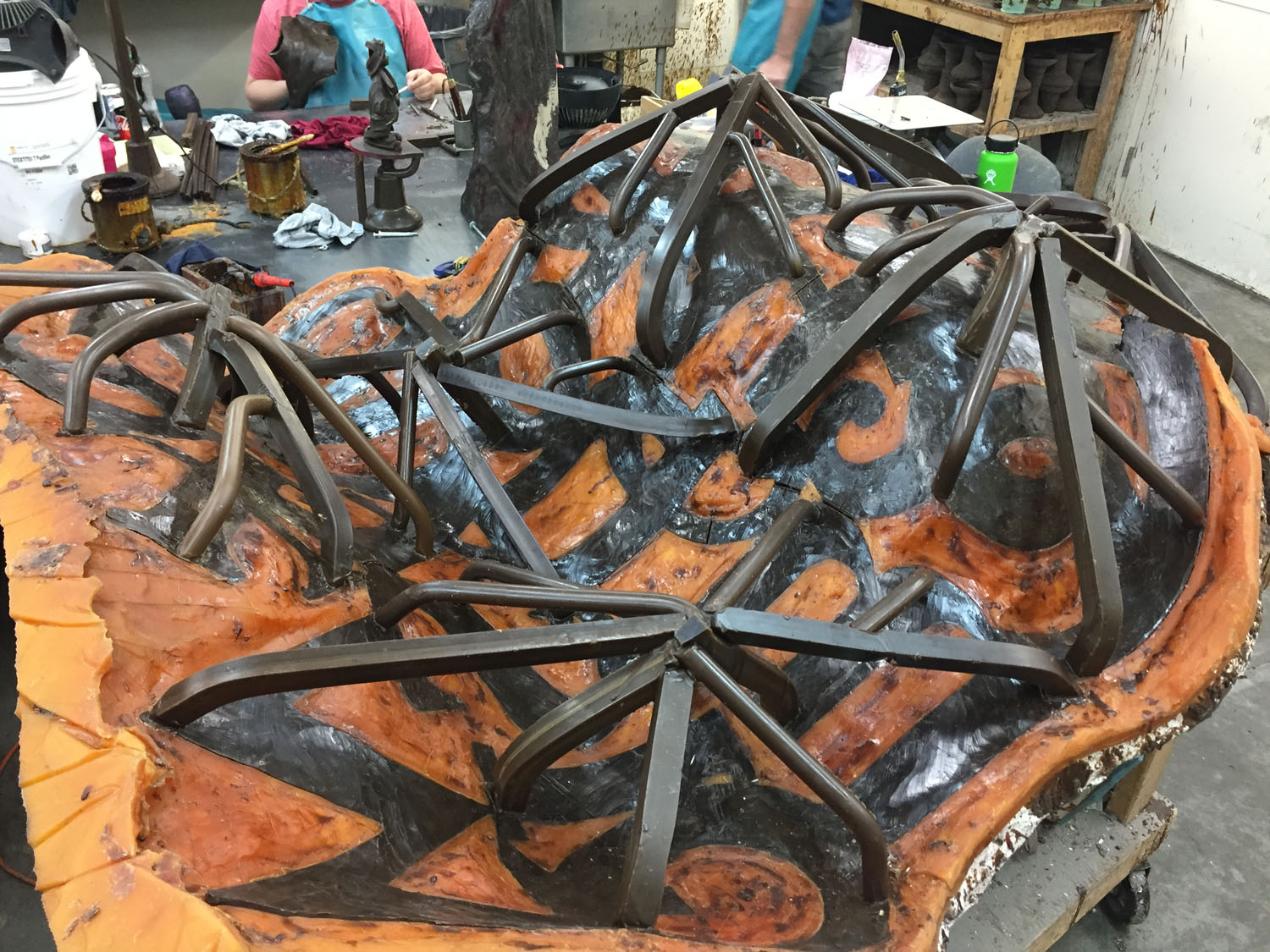People often ask me about how bronze sculptures are cast, and it's pretty complicated. I thought I'd walk you through the process of casting the Alphabet Chair. As of this post, seven have been cast. After the tenth casting, the mold will be destroyed.
Here's how it all begins. The first step is to pull and prepare the waxes. It's a smelly tedious process, but each step has to be done methodically if you want the casting to turn out right...
The clean mold is wheeled into the wax room. The microcrystalline wax is heated to two different temperatures in the vats to the left. The hotter side is more fluid.
This is a close up of a portion of the rubber mold for the Alphabet Chair. It has to be stapled together between pours to line it up properly. Even the best molds suffer over time. The seam will be carefully resculpted in the wax, prior to casting.
Using the hotter wax on the first coat, the wax is brushed onto the warmed surface of the mold.
Gravity is a bear, but the wax can be built up carefully with the slightly cooler wax. You have to be mindful of not letting it cool too much between layers, though, as the wax can shear in layers when it's cool.
...this is very time consuming, as the verticals run and drip. The valleys are easier to build.
The Chair is cast in seven pieces. The main lines are where the the wax is cut, the crossing lines are used as a guide when welding the bronze sections back together.
The ABC section of the Chair is sprued and gated. These are the main and secondary channels that the molten bronze with ultimately flow through during casting.
The waxes have been cut into their sections and have been fully sprued up. Next comes the tricky part - demolding. I'll spare you images and audio of this. Sometimes things snap dramatically and need repairing.
Now each section is carefully checked for flaws, which there are plenty. These bubbles, drips, nicks and bruises are painstakingly resculpted. It's always easier to repair a wax than it is to repair bronze.
This section of the Chair always needs attention. The F (ferns) are dead center in the middle of the sculpture, and when I made the original, I couldn't reach that spot without kneeling on other finished areas of the sculpture. It was a good lesson in planning ahead.
Here's a good photo that shows the shrinkage that occurs in the wax stage. There's a 3-5% shrinkage in all between the original size of the sculpture and the final bronze casting.











